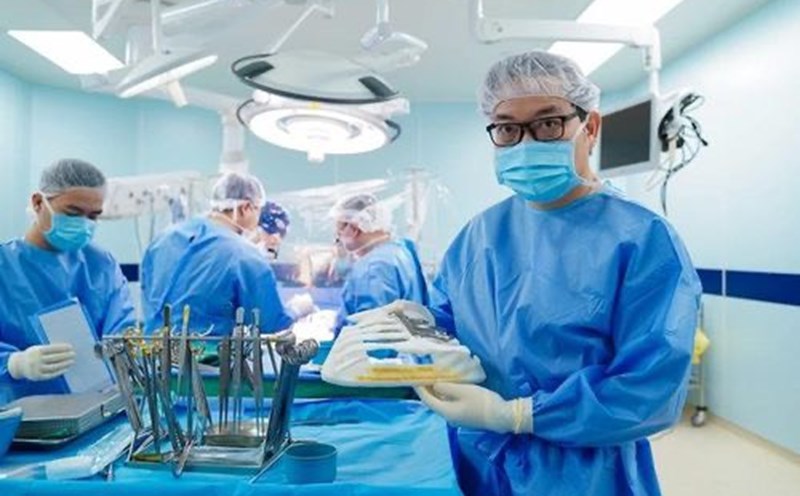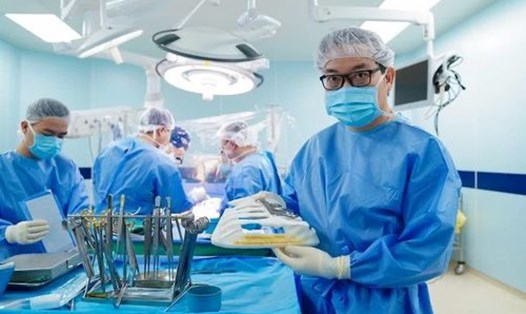A 68-year-old patient, residing in Ho Chi Minh City, had constant pain in his right chest. He noticed that his left breast was getting harder and harder, gradually swelling, growing towards his armpit, and sagging more than his right breast.
However, due to her busy work schedule, she could not arrange time to go to the doctor. It was not until her breast condition became serious, greatly affecting her daily life and psychology, that she decided to see a doctor.
During the examination, the doctors noted that the patient's right breast had grade 4 hard implants and grade 3 sagging; the left breast had grade 4 hard implants and grade 4 sagging, the breast implants had moved out of the anterior armpit line, and the left breast was larger than the right breast.
Ultrasound and CT scan results of the chest area showed that the fluid sac under the mammary gland tissue had shrunk, folded, and formed a fibrous capsule.
In particular, the left breast showed signs of thickening and calcification of the implant capsule, causing the breast implant to deviate from the anterior armpit line. On the right breast, doctors suspected signs of rupture in the capsule with a thick fibrous layer, distorted edges, and fluid accumulation around the implant.
Based on the imaging diagnosis, the medical team decided to perform surgery on the patient, including the following steps: removing the old breast implant, separating the fibrous capsule, cleaning the breast implant cavity, placing a new breast implant, and lifting the sagging breast.
Master, Doctor Tran Le Hong Ngoc - former doctor of the Department of Burns - Plastic Surgery, Trung Vuong Hospital, Ho Chi Minh City - said that early intervention is very important to eliminate the risk of infection and restore the patient's breast shape.
For those who intend to have breast implants, Dr. Tran Le Hong Ngoc recommends that they should go to reputable facilities with experienced doctors; choose quality breast implants; follow the re-examination schedule, and immediately notify the doctor of any unusual signs to ensure long-term effectiveness and safety.











